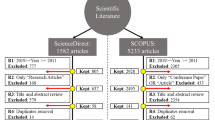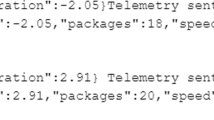Abstract
Parts grouping into families can be performed in flexible manufacturing systems (FMSs) to simplify two classes of problems: long horizon planning and short horizon planning. In this paper the emphasis is on the part families problem applicable to the short horizon planning. Traditionally, parts grouping was based on classification and coding systems, some of which are reviewed in this paper. To overcome the drawbacks of the classical approach to parts grouping, two new methodologies are developed. The methodologies presented are very easy to implement because they take advantage of the information already stored in the CAD system. One of the basic elements of this system is the algorithm for solving the part families problem. Some of the existing clustering algorithms for solving this problem are discussed. A new clustering algorithm has been developed. The computational complexity and some of the computational results of solving the part families problem are also discussed.
Similar content being viewed by others
References
D.K. Allen, Production-oriented classification and coding systems, in:Technology of Machine Tools, Vol. 2, ed. A.R. Thomson (University of California, Livermore, 1980) p. 8.8–1.
M.R. Anderberg,Cluster Analysis for Applications (Academic Press, New York, 1973).
T.S. Arthanari and Y. Dodge,Mathematical Programming in Statistics (Wiley, New York, 1981).
M.V. Bhat and A. Haupt, An efficient clustering algorithm, IEEE Trans. Syst., Man., and Cyber., Vol. SMC-6(1976)61.
B. Everitt,Cluster Analysis (Halsted Press, New York, 1980).
K.S. Fu,Digital Pattern Recognition (Springer-Verlag, Berlin, 1976).
K.S. Fu, Recent developments in pattern recognition (IEEE Trans. Computers, Vol. C-29(1980)845.
C.C. Gallangher and W.A. Knight,Group Technology (Butterworth and Co., London, 1973).
R.C. Gonzalez and P. Wintz,Digital Image Processing (Addison-Wesley, Reading, Massachusetts, 1977).
M.P. Groover,Automation, Production Systems, and Computer-Aided Manufacturing (Prentice-Hall, New Jersey, 1980).
K. Hitomi,Manufacturing Systems Engineering: A Unified Approach to Manufacturing Technology and Production Management (Taylor and Francis, London, 1979).
E. Horowitz and S. Sahni,Fundamentals of Computer Algorithms (Computer Science Press, Rockville, Maryland, 1978).
J.R. King, Machine-component grouping in production flow analysis: Approach using a rank order clustering algorithm, Int. J. Prod. Res. 18(1980)218.
A. Kusiak (1983a), Integer programming approach to the clustering problem, Working Paper No. 03/83, Dept. of Industrial Engineering, Technical University of Nova Scotia, Halifax, 1983).
A. Kusiak (1983b), Part families selection model for flexible manufacturing systems,Proc. Annual IIE Conf., Louisville, KY, 1983, p. 575.
A. Kusiak (1984), Flexible manufacturing systems: A structural approach, Working Paper No. 4/84, Dept. of Industrial Engineering, Technical University of Nova Scotia, Halifax, 1984.
A. Kusiak (1984a), Loading models in flexible manufacturing systems, in:Flexible Manufacturing Systems and Allied Areas, ed. A. Raouf and S.I. Ahmad (North-Holland, Amsterdam, 1985).
R.C.T. Lee, Clustering analysis and its applications, in:Advances in Information Systems Science, ed. J.T. Tou (Plenum Press, New York, 1981).
K. Lenstra, Clustering a data array and the traveling salesman problem, Oper. Res. 22(1974)413.
W.T. McCormick, P.J. Schweitzer and T.W. White, Problem decomposition and data reorganization by a clustering technique, Oper. Res. 20(1972)993.
S.P. Mitrofanov,Science Principles of Group Technology (Boston Spa, Yorks, National Lending Library of Science and Technology, 1966).
H. Opitz and H.P. Wiendhal, Group technology and manufacturing systems for medium quantity production, Int. J. Prod. Res. 9(1971)181.
A. Rosenfeld and A.C. Kak,Digital Picture Processing (Academic Press, New York, 1982).
J.R. Slagle, C.L. Chang and S.R. Heller, A clustering and data reorganization algorithm, IEEE Trans. Syst. Man., and Cyber., Vol. SMC-5(1975)125.
C.S. Snead, Group technology for electronics,Proc. CAM-I 11th Annual Meeting and Technical Conf., Reno, Nevada, 1982, p. 151.
K.E. Stecke, A hierarchical approach to solving machine grouping and loading problems of flexible manufacturing systems Eur. J. Oper. Res. (1984) to be published.
R. Suri and C.K. Whitney, Decision support requirements in flexible manufacturing, Journal of Manufacturing Systems 3, No. 1 (1984).
J.T. Tou and R.C. Gonzalez,Pattern Recognition Principles (Addison-Wesley, Reading, Massachusetts, 1974).
Author information
Authors and Affiliations
Rights and permissions
About this article
Cite this article
Kusiak, A. The part families problem in flexible manufacturing systems. Ann Oper Res 3, 277–300 (1985). https://doi.org/10.1007/BF02023710
Issue Date:
DOI: https://doi.org/10.1007/BF02023710




